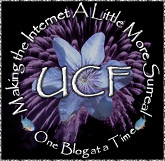- :) or =) <-- smile, happy
;) <-- sardonic, or winking
:p or =p <-- tongue sticking out
:)) <-- happier, or very big smile
:D <-- very big toothy smile
=( or :( <-- sad
:(( <-- sadder, or crying
:'( <-- crying
:\ or :/ or =/ or =\ <-- depends on context; could be crestfallen, anxious, sympathetic, concentration
:| <-- unhappy, discontented, stressed
XD <-- a very big toothy smile with eyes squeezed shut and scrunched together
XP <-- tongue sticking out with eyes squeezed shut and scrunched together
Alternate forms also include a nose, for example:
- :-)
:-p
or, put in the opposite direction (which I've mainly seen from Australians):
- (c:
(c;
Then came right-side-up smileys. These consist of two eyes and a nose. Variations are even more endless. I've always associated them with anime fans (and others heavily influenced by Asian Internet customs), since those were the people who first started using them.
- o.o <-- widened eyes
o.O or O.o <-- one eye larger than the other, can indicate a wide range of things - suspicious, disbelieving, mild shock, etc.
O.O <-- total and utter shock
@.@ <-- drugged, delirious, mesmerized, hypnotized
>.< <-- eyes squeezed shut and scrunched together
-.- <-- annoyed
^.^ or n.n <-- happy
u.u <-- eyes closed
$.$ <-- greed
x.x <-- dead
T.T or ;.; <-- crying, usually in a humorous sense. (T is an eye squeezed shut with a line of tears.)
>.> followed by <.< (or vice versa) <-- shifty eyes
Sometimes the nose is a _ instead of a .
At one point it was possible to see differences in which kinds of smileys someone used, and how they used them, depending on where they first learned Internet social customs. There were regional dialects. Nowadays everyone is more homogeneous - though new smileys still get invented all the time. For example:
^O.O^ - a small dog with big eyes and a psychotic stare
This was inspired by an Italian greyhound named Jake, who became popular in the blogosphere for the way he stares.
Why are smileys important? There are some who say that smileys are superfluous and pointless and that they indicate laziness in coming up with ways to explain meaning with words. I say they are an important way to convey nonverbal communication over a text-only medium. Facial expressions and tone of voice are important in offline social interaction; so too are smileys for the same sorts of things online. Some find them annoying due to the way they are sometimes used. I say that they are great for conveying personality, and if they are annoying it means that the person using them is annoying.
Along with smileys, there are other non-word conventions. Examples of non-smiley punctuation:
- ? <-- "what?" "yes?" "elaborate please"
! <-- shock
... <-- skepticism, disapproval, disbelief, speechless
Exact meaning depends very heavily on context.
And then there are non-words that aren't punctuation. In some circles I'm notorious for being able to convey a huge amount of meaning by how I say "hmm." What it means depends on context, specific spelling variant ("hmm" vs. "Hmm" vs "hmmm" vs. "hmm..." vs. "hmm!" vs. "mmm" vs. "hrm" vs. "mmhmm" ...), and who it's coming from. Meaning tends to be highly individual.


